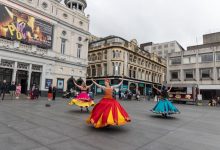Exploring British Cities: A Comprehensive Overview
The United Kingdom, an archipelago rich in history, culture, and diversity, boasts a plethora of cities that each contribute uniquely to its national identity. From the vibrant streets of London to the historic charm of Edinburgh, British cities encapsulate a blend of tradition and modernity. This article delves into several prominent cities across the UK, examining their historical significance, cultural offerings, economic contributions, and contemporary challenges.

London: The Dynamic Capital
London, the capital of England and the UK, is a global city renowned for its economic prowess, cultural diversity, and historical significance. With a population exceeding 9 million, it serves as a melting pot of cultures, attracting individuals from all corners of the globe. The city’s history dates back to Roman times, with landmarks such as the Tower of London and Westminster Abbey reflecting its rich past.
Economically, London stands as one of the world’s leading financial centers, housing the London Stock Exchange and numerous multinational corporations. The city’s transport infrastructure, featuring the iconic London Underground, facilitates seamless connectivity. However, London faces challenges, including housing affordability and the impact of Brexit on its economy.
Culturally, London is home to world-class museums, galleries, and theaters. The British Museum, National Gallery, and West End theaters showcase the city’s commitment to the arts. Events like the Notting Hill Carnival celebrate the rich multicultural tapestry of London, making it a vibrant hub for both residents and tourists.
Edinburgh: The Historic Heart of Scotland
Edinburgh, the capital of Scotland, is celebrated for its stunning architecture, historic sites, and cultural festivals. The city’s Old Town and New Town are UNESCO World Heritage Sites, characterized by medieval structures and Georgian elegance. Edinburgh Castle, perched atop Castle Rock, offers a glimpse into Scotland’s turbulent history.
The city is also renowned for the Edinburgh Festival Fringe, the world’s largest arts festival, which attracts artists and audiences from around the globe each August. This cultural event fosters creativity and innovation, showcasing everything from theater and comedy to music and dance.
Economically, Edinburgh has a diverse landscape, with finance, education, and tourism playing pivotal roles. The city is a hub for financial services, housing major banks and investment firms. However, challenges such as tourism management and the impact of climate change pose ongoing concerns for local authorities.
Manchester: The Industrial Powerhouse
Manchester, located in the northwest of England, is often referred to as the birthplace of the Industrial Revolution. The city’s rich industrial heritage is evident in its architecture and museums, such as the Museum of Science and Industry. Today, Manchester is a vibrant urban center known for its music scene, sporting events, and cultural diversity.
The city is home to two of the most famous football clubs in the world: Manchester United and Manchester City. Sports play a significant role in the city’s identity, uniting fans from diverse backgrounds. Additionally, Manchester’s music scene has produced iconic bands such as Oasis and The Smiths, further cementing its cultural significance.
Economically, Manchester has evolved from its industrial roots to become a hub for digital and creative industries. The city boasts a thriving tech sector, supported by institutions such as the University of Manchester. Despite this growth, issues such as inequality and urban regeneration remain challenges for local policymakers.
Bristol: The Creative City
Bristol, located in the southwest of England, is known for its maritime history, vibrant arts scene, and innovative spirit. The city’s harbors have been central to its development, playing a crucial role in trade and commerce. Today, Bristol is recognized for its commitment to sustainability and social enterprise.
Culturally, Bristol is a hotspot for street art, with renowned artist Banksy hailing from the city. The annual Bristol International Balloon Fiesta showcases the city’s unique charm, drawing visitors from around the world. The city’s diverse music scene spans genres from trip-hop to classical, reflecting its creative vibrancy.
Economically, Bristol has a strong focus on aerospace, technology, and education. Companies like Airbus and Rolls-Royce have significant operations in the region. However, challenges such as housing shortages and traffic congestion continue to impact the quality of life for residents.
Liverpool: The Maritime City
Liverpool, located in northwest England, is renowned for its rich maritime history, cultural heritage, and musical legacy. The city was a significant port during the transatlantic slave trade and has a complex historical narrative that shapes its identity. Today, Liverpool is known for its vibrant cultural scene, including the famous Cavern Club, where The Beatles first gained fame.
The city was designated a UNESCO World Heritage Site for its historical docks and architectural significance. Liverpool’s cultural offerings include the Tate Liverpool, showcasing contemporary art, and the Liverpool Philharmonic Orchestra, representing the city’s commitment to the arts.
Economically, Liverpool has diversified its economy, with strengths in tourism, healthcare, and education. The city is home to several universities, contributing to its youthful demographic. However, economic disparities and challenges in urban regeneration remain pressing issues for local governance.
Conclusion
The cities of the United Kingdom each tell a unique story, reflecting the nation’s rich history, cultural diversity, and contemporary challenges. From London’s dynamic landscape to Edinburgh’s historic charm, each city offers distinct contributions to the fabric of British identity. As urban areas continue to evolve, addressing economic, social, and environmental challenges will be crucial in shaping their future. The interplay of tradition and innovation in these cities will ultimately define the UK’s journey in the years to come.
The exploration of British cities reveals a tapestry woven from historical events, cultural developments, and ongoing societal shifts, illustrating the dynamic nature of urban life in the UK today.

